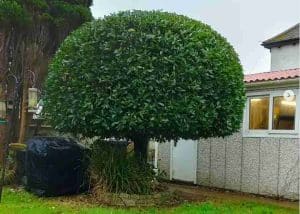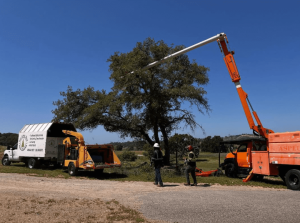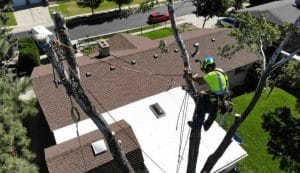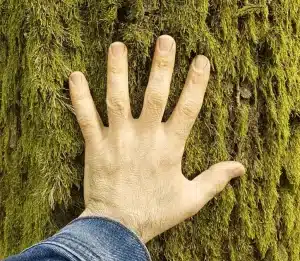When a tree is removed, many homeowners believe the job is done. But what happens if you don’t grind the stump? While it might seem harmless or even “natural” to leave it, the reality is very different. That leftover stump can turn into a hidden danger in your yard – causing property damage, attracting pests, reducing your home’s curb appeal, and even lowering your property’s value. In this article, we’ll uncover what truly happens when you skip stump grinding and why ignoring it can lead to expensive, long-term problems.
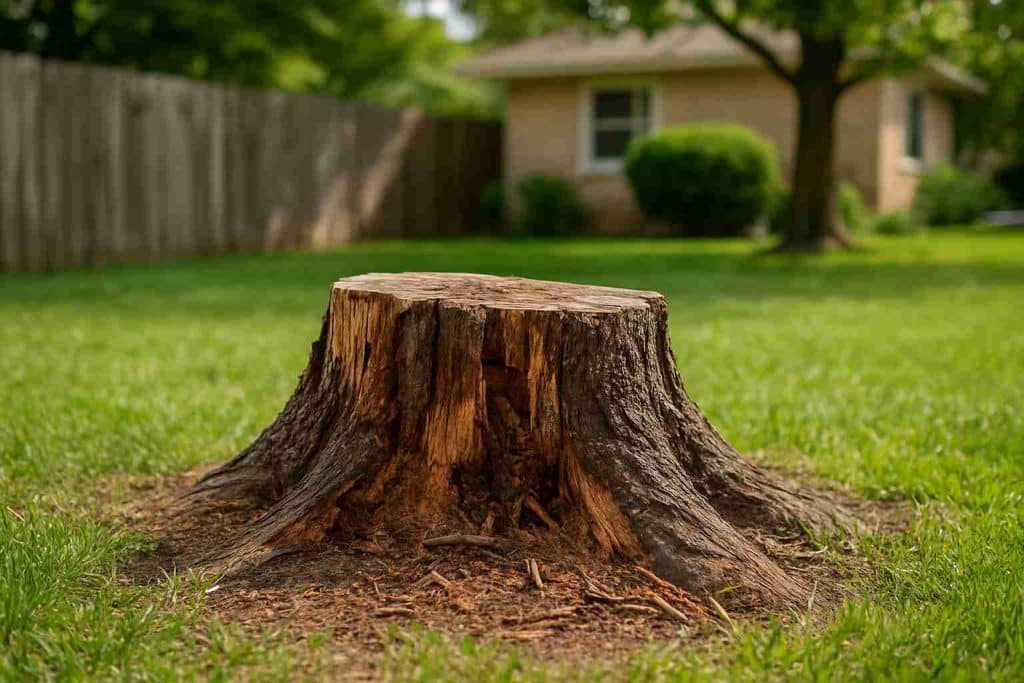
Table of Contents
The Truth Behind Tree Stumps: Why They’re Not Just Ugly
Tree stumps may look harmless, even rustic—but appearances are deceiving. That leftover stump is more than just a bump in your lawn. It’s the start of a slow, quiet decay process. Over time, the stump will begin to rot, attracting unwanted pests and fungus. It also disrupts the look and use of your yard.
Even a small stump becomes a noticeable eyesore. Imagine trying to sell your home and explaining why there’s a rotting tree stump in the middle of your lawn. Not a great first impression, right?
Rotting Wood = Pests You Don’t Want
As the stump decomposes, it creates the perfect environment for pests like:
- Termites
- Carpenter ants
- Beetles
- Fungi and mold spores
These aren’t just backyard nuisances. If termites or carpenter ants set up shop in your stump, your home’s foundation, deck, or wooden fence could be next. The longer you wait, the more likely it is that pests will migrate into nearby structures—especially if the stump is close to your house or garage.
Stumps Are a Safety Hazard, Especially for Kids
Unseen hazards like tree stumps are trip-and-fall accidents waiting to happen. If you have young kids running around or guests visiting, they may not notice a stump hidden by grass or leaves. Falls and injuries are common.
This risk multiplies at night, during snow cover, or when mowing the lawn—creating an invisible obstacle that can damage equipment or cause injury.
Stump Regrowth: Yes, the Tree Can Come Back
You thought the tree was gone, but guess what? Many tree species can regrow from a leftover stump. Shoots will start sprouting from the base, trying to reestablish the tree.
This regrowth is often aggressive and hard to kill. You might find yourself constantly cutting back shoots, dealing with unwanted new branches, or applying herbicides that still don’t work. Worse, the roots may continue growing underground, spreading under your yard or garden.
How Leftover Roots Can Damage Driveways and Pipes
Even after the tree is gone, its roots may still be alive and active. These underground roots can:
- Crack concrete patios and sidewalks
- Lift and shift driveways
- Invade sewer and water lines
You won’t see the damage happening until it’s already costly. One root system can stretch dozens of feet from the original stump. Grinding the stump helps cut off the food supply to these roots and stops further growth.
Lawncare Problems: Mowing Around a Stump Is a Pain
Homeowners often overlook how annoying a stump is when maintaining their yard. Mowing around it becomes a constant struggle. Trimming weeds around the base? Even worse.
If you’re landscaping or trying to seed new grass, the stump gets in the way. It can also block equipment like wheelbarrows, sprinklers, or gardening tools. Your yard isn’t fully usable until it’s gone.
Lower Curb Appeal and Reduced Property Value
First impressions matter especially when it comes to home value. If you plan to sell your home, even a small, rotting stump sends the wrong signal to potential buyers.
They may wonder:
- What else has been neglected?
- Is the yard hard to maintain?
- Are there root issues they’ll have to deal with?
It’s a simple fix that could impact your property value by thousands of dollars. For landscaping and real estate agents, stump removal is a standard suggestion to improve curb appeal before listing.
Legal and Insurance Risks You Might Not Know
If someone trips over a stump on your property and gets hurt, you could be liable. Homeowners insurance might not cover injuries from obvious yard hazards that were never addressed.
In some neighborhoods or HOA communities, visible tree stumps may also violate local appearance codes or landscaping rules, leading to fines or notices.
Grinding vs. Digging: What’s the Better Removal Option?
When it comes to removal, most professionals recommend stump grinding over full digging. Here’s why:
| Method | Pros | Cons |
|---|---|---|
| Grinding | Fast, affordable, minimal yard damage | May leave some roots behind |
| Digging | Total removal of stump and roots | Expensive, invasive, requires backfill |
Grinding cuts the stump below ground level and turns it into mulch. It’s quick, cost-effective, and preserves the look of your yard. In contrast, digging is a big job that can destroy nearby grass and plants.
How Much Does It Cost to Grind a Stump? Is It Worth It?
On average, stump grinding costs range from $100 to $400 per stump, depending on:
- Stump size and diameter
- Root spread
- Accessibility
- Local rates and contractor fees
While that may seem like an unnecessary expense, it’s far cheaper than paying for termite treatment, sewer line repair, or concrete resurfacing later on.

Conclusion: Don’t Ignore It—Fix It Before It’s Too Late
Leaving a tree stump in your yard may seem like an innocent choice, but it opens the door to a host of problems. From pest infestations and regrowth to safety risks and property damage, the consequences are real—and often expensive.
Grinding a stump now saves money, time, and stress down the road. It protects your family, your property, and your home’s value. So if you’re wondering what happens if you don’t grind a tree stump, now you know: the problems you ignore today could cost you tomorrow.
FAQs
What happens if I leave a tree stump in my yard?
Leaving a tree stump can attract pests, cause new tree growth, and make lawn care harder. It may also lower your yard’s appearance and safety.
Can a tree stump cause termites in my house?
Yes, decaying stumps can attract termites, which might spread to your home, leading to costly damage and repairs.
Will a tree stump grow back if not removed?
Some stumps can sprout new shoots, leading to unwanted tree growth that requires ongoing maintenance to control.
Is it dangerous to leave a tree stump in the ground?
Stumps can be tripping hazards, especially for children and the elderly, and may hide other dangers like pests or sharp roots.
Does a tree stump affect property value?
Yes, visible stumps can make your yard look unkempt, potentially lowering your property’s curb appeal and value.
How does a tree stump affect lawn mowing?
Stumps obstruct mowing paths, making lawn care more difficult and increasing the risk of damaging equipment.
What’s the best way to remove a tree stump?
Stump grinding is an effective method that removes the stump below ground level, preventing regrowth and improving yard appearance.

